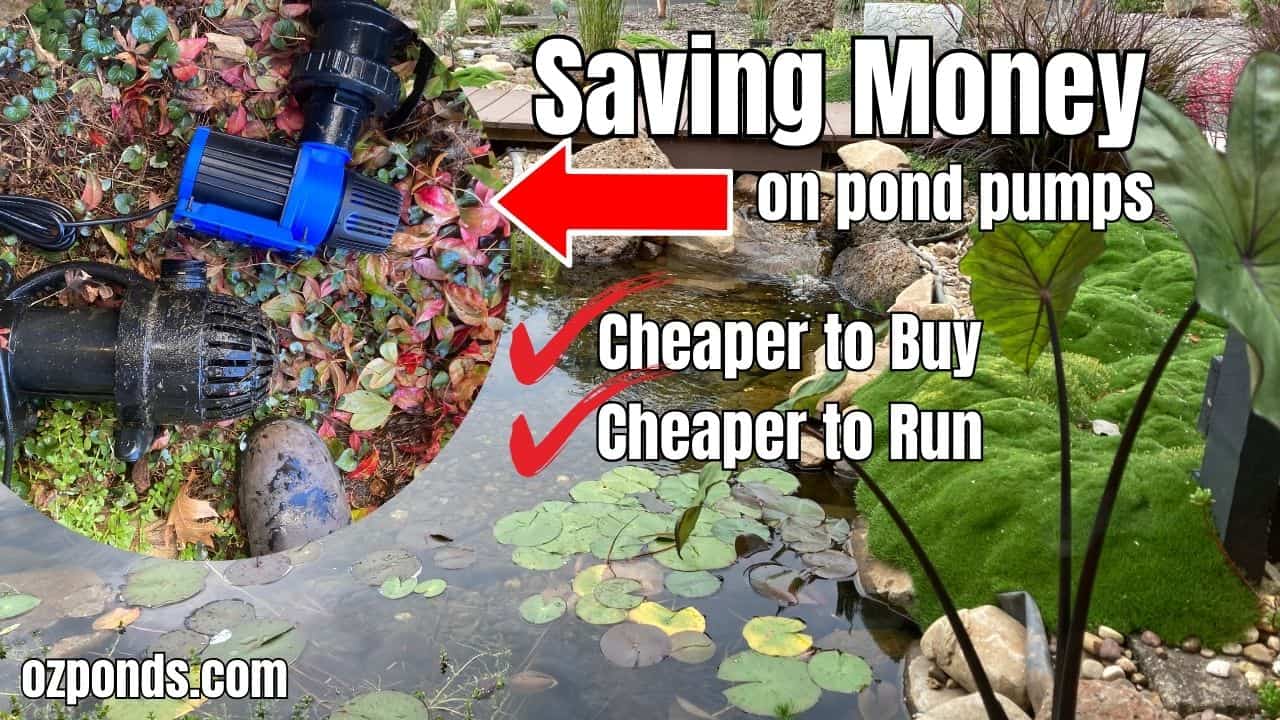I want to share with you my experience in transitioning to low voltage DC pumps—an alternative that not only saves energy but also reduces costs without compromising on the beauty or functionality of your pond.
If you prefer video content you can watch the video I made below, if not keep reading.
Four years ago, I built my Aquascape pond. The process was made incredibly easy with a convenient kit that included everything I needed, including the AquaSurge 3000 pump.
The results were stunning, but as time went on, I realised something crucial—the pump was consuming more energy than I had anticipated.
As a pond enthusiast with several ponds to maintain, energy efficiency is a big priority.
The Hidden Costs of Traditional Pond Pumps
When I first installed the AquaSurge 3000 (Amazon link), I was impressed by its performance. This pump moves 12,000 litres (3,000 gallons) of water per hour, through a skimmer and biological filter called a bio-falls (Amazon link).
However, with this power comes a hidden cost—energy consumption.
The AquaSurge 3000 uses 165 watts per hour, which might not seem like much at first glance. But when you consider that most pond pumps run 24/7, the energy costs quickly add up.
As someone who manages multiple ponds, I began to notice the impact on my electricity bill. That’s when I started researching alternatives and came across low voltage DC pumps.
Discovering Low Voltage DC Pumps: A Game Changer
Years ago I started using low volt variable speed DC pumps (Amazon link), originally designed for aquariums. At first, I was hesitant—could an aquarium pump really stand up to the demands of a pond?
But after digging into the specs and testing them out, I was pleasantly surprised.
These little pump can deliver the same output as the AquaSurge 3000—12,000 litres (3,000 gallons) per hour—but at nearly half the energy consumption.
At full speed, these pumps are more efficient, and being a variable speed pump, I can dial them down to save even more energy when full power isn’t necessary.
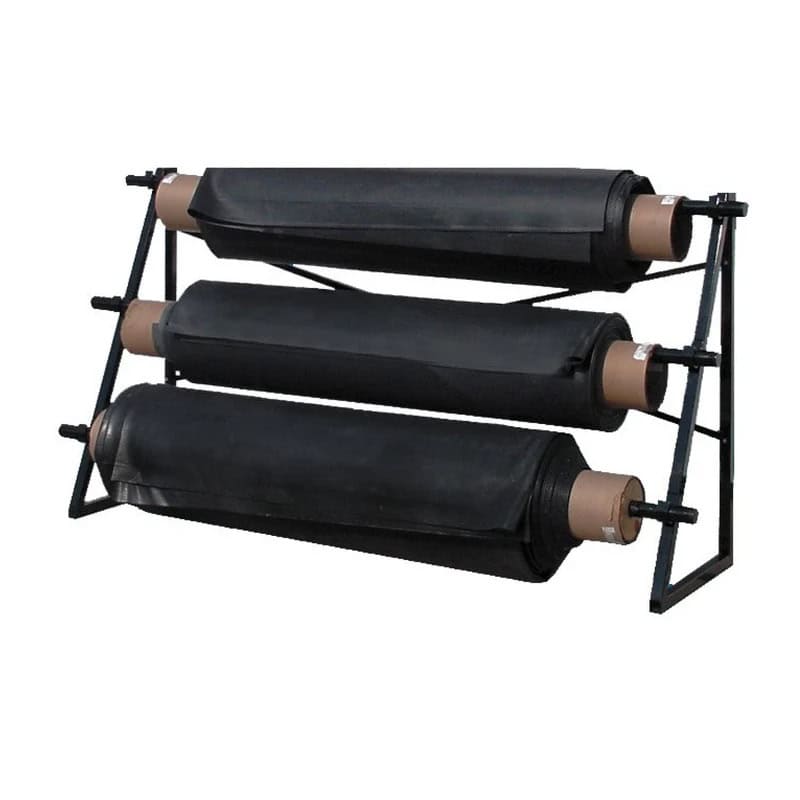
Pond Equipment in Australia
I’ve partnered up with Rock Around The Block, a leading pond retailer here in Australia. There is a discount code: OZPONDS
They stock high quality Liner, Underlayment, Pumps, Lightning and more. Click the button below to check out their range.
Why Low Voltage DC Pumps Are Worth Considering
1. Energy Efficiency
One of the biggest advantages of low voltage DC pumps is their energy efficiency. These pumps are designed to operate at a lower wattage, which means they consume less electricity.
Over time, the savings can be substantial, especially if you’re running your pond pump 24/7 like most of us do.
For instance, in my case, replacing the AquaSurge 3000 with the Haspo SWD-12000 has cut my energy consumption by more than half.
This not only reduces my carbon footprint but also puts more money back in my pocket—savings that I can reinvest into my ponds or other hobbies.
2. Cost-Effective and Budget-Friendly
Another compelling reason to consider low voltage DC pumps is their cost-effectiveness. These pumps tend to be cheaper upfront compared to traditional pond pumps.
Add to that the ongoing energy savings, and they become an incredibly budget-friendly option.
When I first explored this option, I was skeptical. After all, there’s often a trade-off between cost and quality, right?
But after years of using various low voltage DC pumps across my ponds, I can confidently say that they’ve exceeded my expectations. The initial investment is lower, and the long-term savings are undeniable.
3. Flexible Speed Control
One of the features that I’ve come to appreciate the most is the variable speed control. With traditional pumps, you’re often stuck with a single speed.
But with a low voltage DC pump, you have the flexibility to adjust the speed based on your pond’s needs.
For example, during peak seasons when my ponds need more circulation, I can ramp up the speed. Conversely, during cooler months or when I’m away, I can dial it down to conserve energy.
This flexibility allows me to maintain optimal conditions in my ponds without wasting energy.
The Importance of Proper Installation and Maintenance for your pond pump
While low voltage DC pumps offer numerous benefits, it’s essential to install and maintain them correctly to maximise their lifespan and efficiency. These techniques will also increase the lifespan of a traditional pond pump.
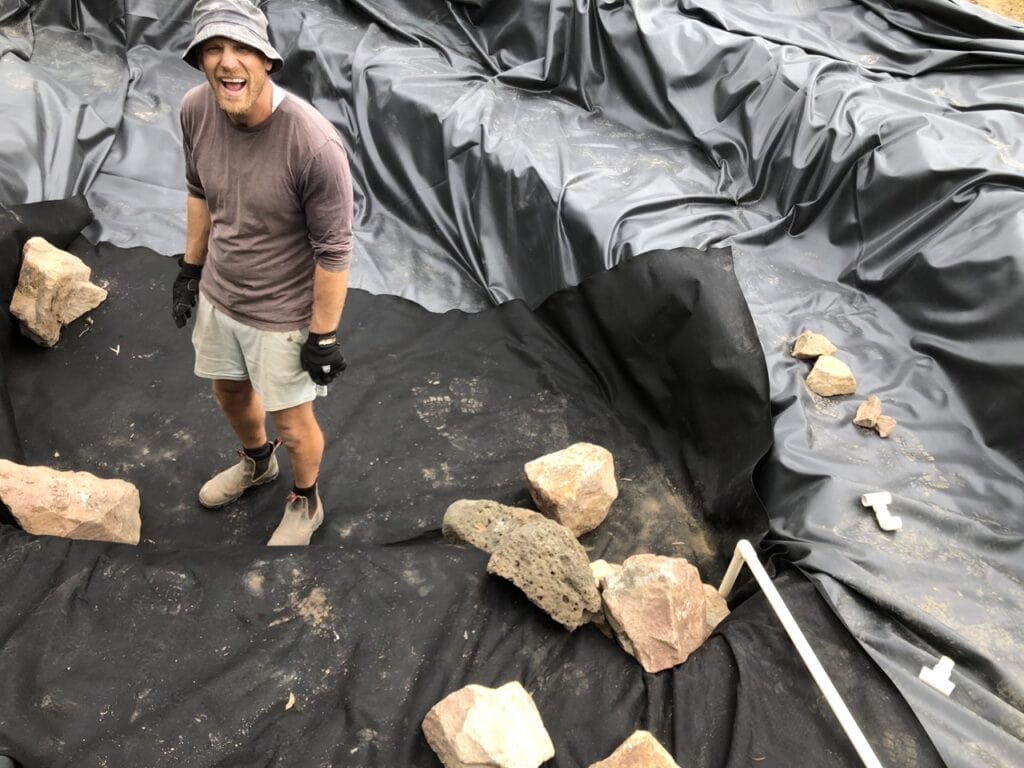
Blueprint I use to build my ponds
- All the numbers I use to design my ponds, delivered straight to your inbox
- These formulas have helped people all over the world build beautiful, low maintenance ponds, without spending a fortune.
- Access to a private community of like minded people and a chat bot that loves answering pond related questions.
1. Placement Matters
Unlike traditional pond pumps, you shouldn’t just plunk these pumps at the bottom of your pond. Doing so can lead to clogs and reduced efficiency. Instead, consider using a pre-filter system to protect the pump from debris.
In my Aquascape pond, I use a surface skimmer with a sponge that sits over the top of the pump. This setup helps collect larger debris, preventing it from reaching and potentially clogging the pump.
For my DIY skimmer in the courtyard pond, I used a simple bucket with a sponge that serves the same purpose.
2. Protecting the Transformer and Extending the Power Cable
Another consideration is the placement of the pump’s transformer. Most low voltage DC pumps are designed with transformers meant for indoor use.
To protect them from the elements, I keep mine undercover—either on the veranda or in a shed.
If you need to extend the pump cable, make sure to use quality, extension cables. I was lucky enough to get a 10-meter extendable cable directly from the manufacturer when I ordered my pump.
In the past I’ve had to extend the cable myself.
Quality Concerns: What About Pumps Made in China?
I know some of you might be concerned about the quality of pumps made in China. It’s a common concern, especially when it comes to electrical devices.
However, in my experience, the quality of these pumps has been excellent.
Every electrical device sold in a country like Australia, UK, USA or the EU must meet specific safety standards.
The Haspo SWD-12000 I received (direct from China) was marked with the CE symbol, although it didn’t have the Australian certification.
I suspect this is due to the pump being low voltage, which might fall under different regulations.
That said, it’s always a good idea to ensure that any pump you purchase meets the necessary safety standards for your country.
The transform that converts the AC power to DC power had all the relevant makings and stamps.
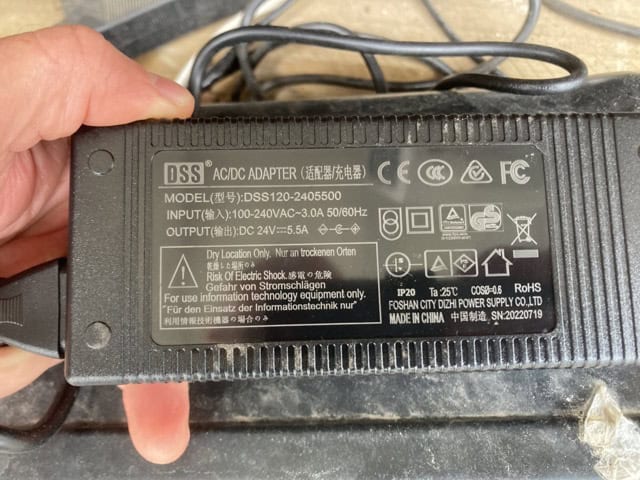
Real-Life Performance: My Experience Over Five Years
After using various low voltage DC pumps across multiple ponds for over five years, I can confidently say that they’ve performed admirably. Despite the lower cost, these pumps have been reliable, efficient, and durable.
I rarely need to clean them, thanks to the pre-filter setups, and they continue to operate smoothly even after years of continuous use.
The energy savings alone have made the switch worthwhile, but the added benefits of cost savings and flexible speed control have made these pumps an integral part of my pond maintenance routine.
What’s Next? The Future of Pond Pumps
As technology advances, I expect more brands to embrace low voltage DC pumps.
We’re likely to see weather-resistant transformers and plug-and-play leads becoming standard features.
These improvements will make these pumps even more accessible and user-friendly, further reducing the barriers to entry for pond enthusiasts looking to save energy and money.
Conclusion: Is a Low Voltage DC Pump Right for You?
If you’re looking for ways to reduce the cost of maintaining your pond without sacrificing performance, a low voltage DC pump might be the solution you’ve been searching for.
With their energy efficiency, cost-effectiveness, and flexible speed control, these pumps offer a modern alternative to traditional pond pumps.
I hope this post has provided you with valuable insights into the benefits of low voltage DC pumps. Thanks for reading, happy ponding!
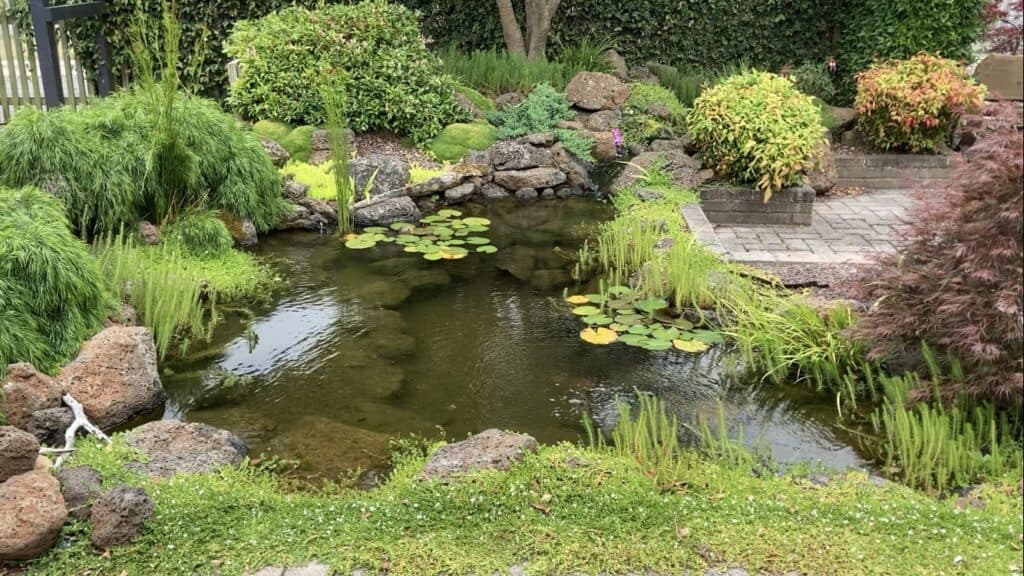
Join my free email list
If you would like to join my free email list click the button below.
I promise I won’t spam you, I’ll only send information I think can help you save money building and maintaining a pond.

